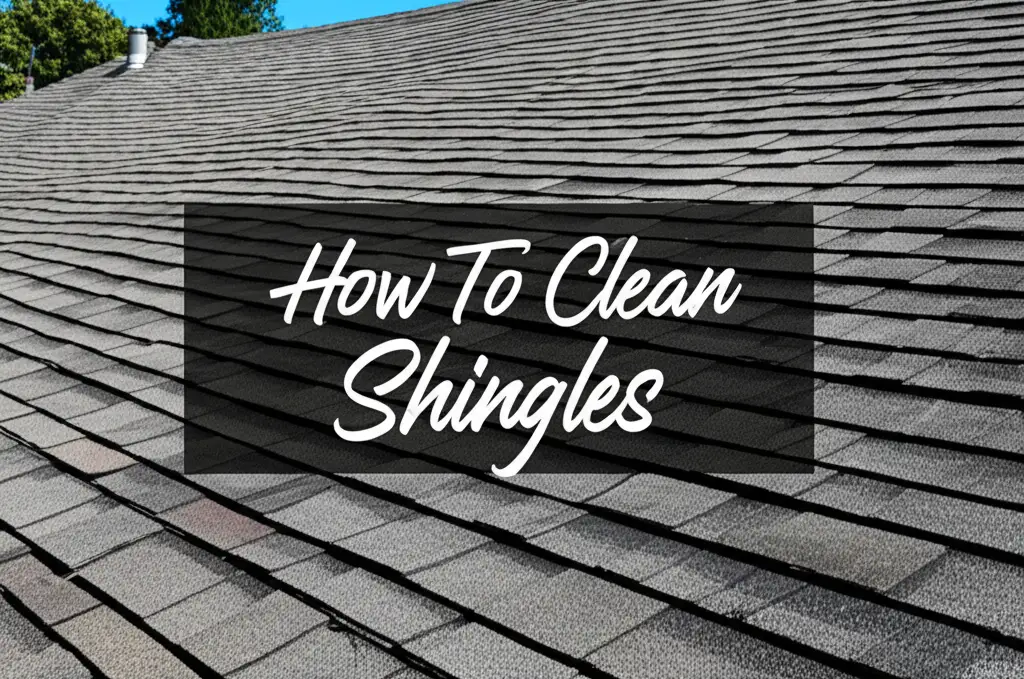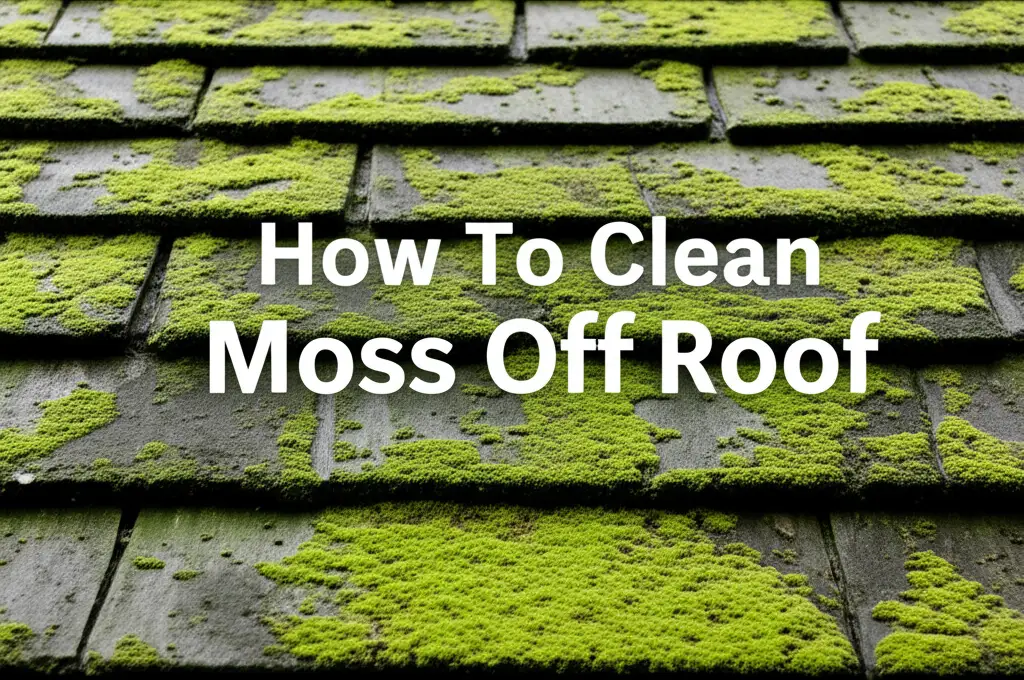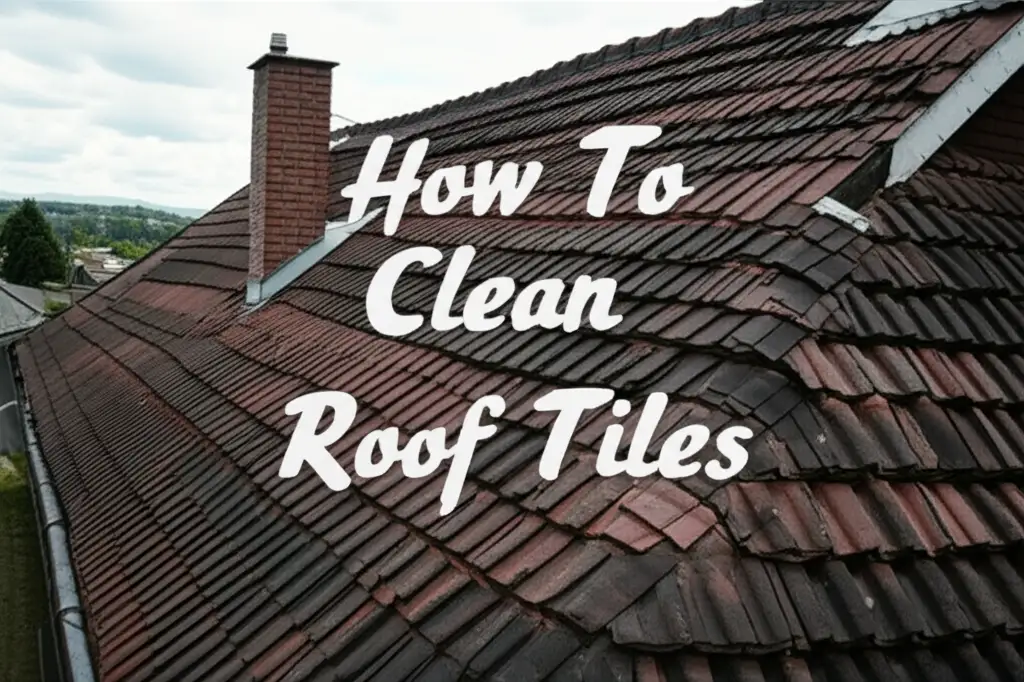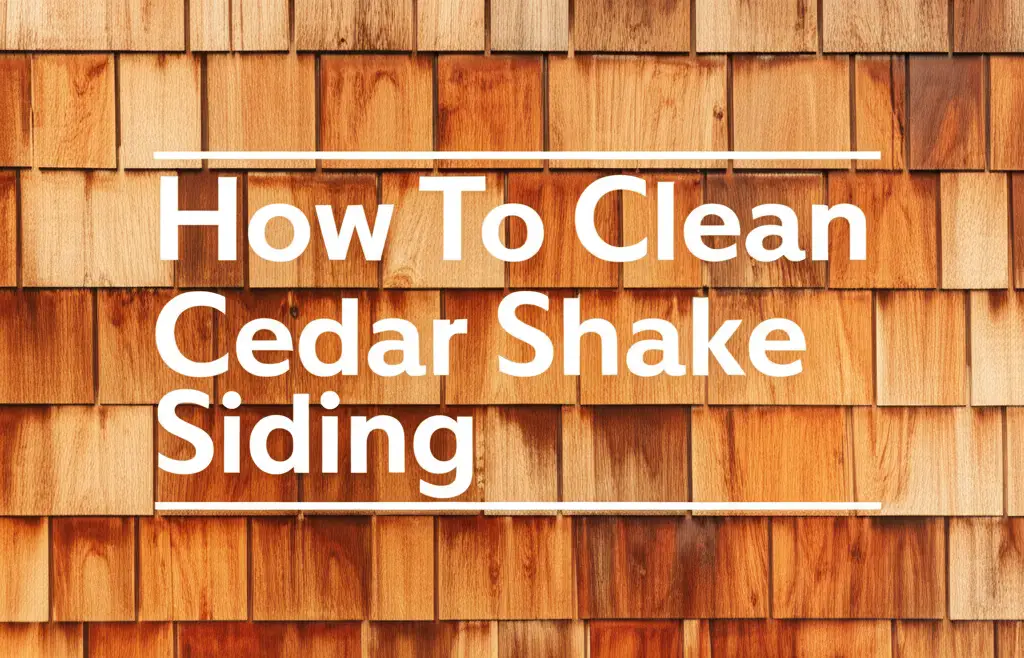· Home Maintenance · 13 min read
How To Clean Roof Stains
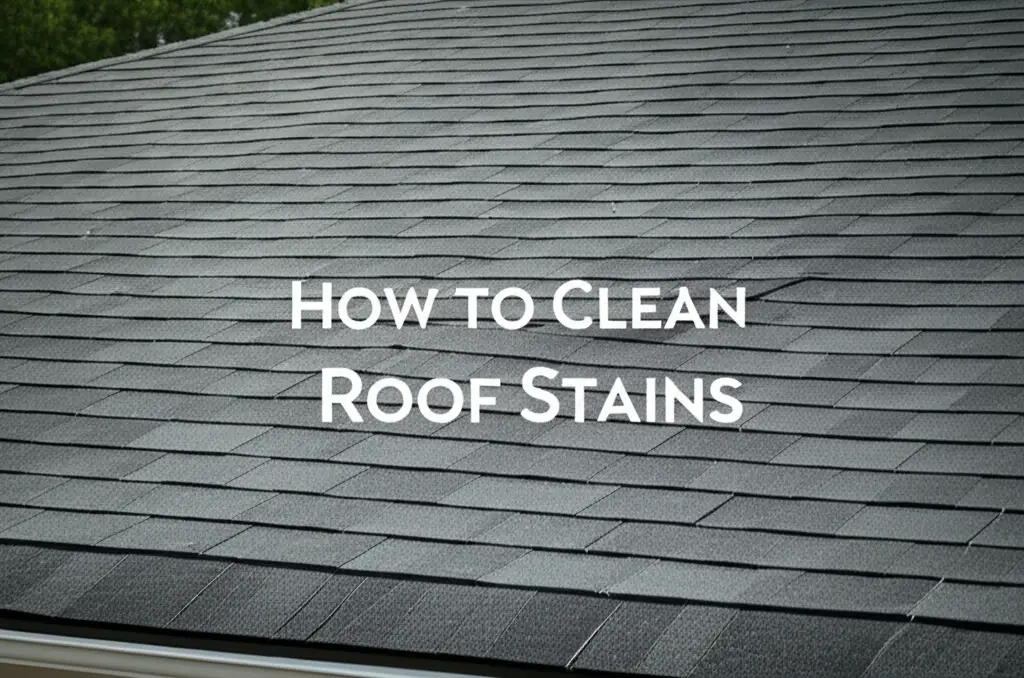
Reclaiming Your Roof’s Beauty: How to Clean Roof Stains Effectively
Have you noticed unsightly black streaks or green patches appearing on your roof? These blemishes are common, yet they detract from your home’s curb appeal. Cleaning roof stains effectively restores your roof’s appearance and helps extend its lifespan. I understand the frustration of seeing a once-beautiful roof become discolored.
This comprehensive guide will help you understand different types of roof stains and show you how to clean them safely. We will explore the necessary tools and solutions for a spotless finish. You will learn step-by-step methods and valuable prevention tips. Let’s make your roof look new again.
Takeaway
- Identify common roof stains like algae, moss, and lichen to choose the right cleaning method.
- Prioritize safety by using appropriate gear and understanding ladder stability before starting.
- Opt for soft washing over high-pressure washing to protect roof integrity.
- Apply suitable cleaning solutions, such as bleach-based mixtures or oxygen bleach, for effective stain removal.
- Implement regular maintenance and preventive measures to keep your roof stain-free long-term.
Cleaning roof stains involves identifying the stain type, choosing a safe and effective cleaning solution like oxygen bleach or a diluted bleach mixture, and applying it with a low-pressure sprayer or soft brush, followed by a thorough rinse to restore your roof’s appearance.
Understanding Common Roof Stains and Their Causes
Roof stains come in many forms, and understanding what causes them helps you choose the correct cleaning approach. The most common culprits are biological growths. These organisms thrive in damp, shady conditions, making your roof an ideal habitat. I see these types of stains on many homes.
Black streaks, often called “algae streaks,” are a prevalent issue. They are caused by a specific type of blue-green algae, Gloeocapsa magma. This algae feeds on the limestone filler in asphalt shingles, leaving behind dark, unsightly discoloration. Over time, these streaks spread across the roof surface. They are more than just an aesthetic problem.
Green patches are typically moss. Moss is a non-vascular plant that grows in thick mats. It prefers shady, moist areas and often accumulates on north-facing roof sections or under tree canopies. Moss holds moisture against the roof surface, which can lead to premature granule loss on shingles. This compromises the roof’s protective layer.
Lichen is another common growth, often mistaken for moss or algae. Lichen looks like crusty, flat patches with a variety of colors, including green, gray, yellow, or orange. It is a symbiotic organism, a combination of algae and fungi. Lichen adheres very strongly to the roof surface. Removing it can be more challenging without damaging the shingles.
Other stains include rust, often from metal flashing or nails, and mildew, which is a type of fungus that appears as black, gray, or brown spots. Rust stains require specific rust removers. Mildew responds well to general roof cleaning solutions. Identifying the stain helps you plan your attack.
Safety First: Essential Preparations for Roof Cleaning
Cleaning your roof requires careful planning and strict adherence to safety protocols. Working at height is inherently risky. I always stress safety first. Before you even think about applying a cleaning solution, you must prepare yourself and your work area.
Start with personal protective equipment (PPE). You will need sturdy, non-slip footwear. These shoes provide better grip on sloped or wet surfaces. Safety glasses or goggles are crucial for protecting your eyes from splashes of cleaning solution or debris. Gloves, preferably chemical-resistant, will protect your hands from harsh chemicals.
A reliable ladder is your next critical piece of equipment. Choose an extension ladder that extends at least three feet above the roofline. This provides a stable handhold for getting on and off the roof. Position the ladder on firm, level ground. Have someone hold the base for added stability, especially if you are working alone. Never use a wobbly or damaged ladder.
Inspect your roof thoroughly before you start. Look for any loose or broken shingles. Cleaning a damaged roof can worsen the problem. Repair these areas before applying any solutions. Ensure the roof surface is free of major debris like large sticks or leaves. Clearing debris prevents slips and ensures the cleaning solution works effectively.
Protect your surrounding property. Cover any plants, shrubs, or landscaping around your house with tarps or plastic sheeting. Many roof cleaning solutions can harm vegetation. Also, consider turning off power to exterior outlets if you plan to use electric tools. Always err on the side of caution when working around water and electricity.
Choosing the Right Cleaning Method and Solutions
Selecting the correct cleaning method and solution is vital for effective stain removal without damaging your roof. Not all roof types can handle the same treatment. The goal is to clean thoroughly yet gently. I always recommend caution when choosing a method.
High-pressure washing is generally not recommended for most residential roofs, especially asphalt shingles. High pressure can blast away the protective granules on shingles, shortening their lifespan. It can also force water underneath shingles, leading to leaks and mildew growth in your attic. This damage might not be immediately visible.
Soft washing is the preferred and safest method for cleaning most roofs. This technique uses a low-pressure spray, similar to a garden hose, combined with specialized cleaning solutions. The solution does the work of breaking down the stains, not the water pressure. This method protects your roof’s integrity while effectively removing algae, moss, and lichen. You can learn more about safely cleaning asphalt shingle roofs to protect them.
For cleaning solutions, a common and effective choice is a diluted bleach mixture. Mix one part household bleach (sodium hypochlorite) with one part water. Add a small amount of laundry detergent or dish soap to this mixture. This acts as a surfactant, helping the solution stick to the roof stains. Always test this solution on an inconspicuous area first.
Another excellent option, particularly for moss and lichen, is oxygen bleach (sodium percarbonate). Oxygen bleach is less harsh on plants and landscaping than chlorine bleach. It works by releasing oxygen bubbles that lift the stains and organisms from the roof surface. Mix oxygen bleach powder with water according to product instructions. For stubborn moss, a dedicated moss removal cleaner might be needed.
Commercial roof cleaning products are also available. These products are often formulated for specific types of stains and roof materials. Always read product labels carefully. Follow all instructions for mixing, application, and safety. Some products are specifically designed for cleaning roof tiles, offering tailored solutions for different materials.
Step-by-Step Guide: How to Clean Roof Stains Effectively
Now that you have your safety gear and chosen your cleaning solution, it’s time to learn how to clean roof stains step by step. This process requires patience and attention to detail. I find breaking it down into manageable steps makes the job easier.
Step 1: Wet the Roof and Surrounding Areas. Before applying any cleaning solution, thoroughly wet down the roof surface with plain water. Use a garden hose with a low-pressure nozzle. This helps to cool the roof and prevents the cleaning solution from drying too quickly. Also, generously water any plants or shrubs around your home. This pre-wetting helps dilute any runoff from the cleaning solution.
Step 2: Apply the Cleaning Solution. Use a pump sprayer to apply your chosen cleaning solution. Start at the bottom of the roof and work your way up, applying an even coat. This ensures the solution flows downwards over stained areas, maximizing contact time. Avoid oversaturating the roof. You want it wet, not pooling. For particularly stubborn areas, you might apply a slightly thicker coat.
Step 3: Allow the Solution to Dwell. Let the cleaning solution sit on the roof for the recommended dwell time. This is typically 15-30 minutes, but always refer to your product’s instructions. The solution needs time to break down the algae, moss, or lichen. Do not let the solution dry on the roof. If it starts to dry, lightly mist it with water to keep it active.
Step 4: Lightly Scrub or Agitate (If Necessary). For very thick moss or stubborn lichen, you might need light agitation. Use a soft-bristled brush attached to an extension pole. Gently brush the affected areas. Avoid aggressive scrubbing, as this can damage the roof granules. Many solutions do the work themselves, so scrubbing is often optional.
Step 5: Rinse the Roof Thoroughly. Starting from the top of the roof and working your way down, thoroughly rinse the entire surface with clean, low-pressure water from a garden hose. Ensure all cleaning solution residue is removed. Rinse the surrounding plants and landscaping again to wash away any runoff. This step is crucial for preventing damage to your vegetation and ensuring a clean finish.
Step 6: Allow to Dry and Evaluate. Let the roof dry completely. Many stains, especially algae, will disappear immediately. Moss and lichen might take a few days or weeks to completely die off and wash away with rain. If some stains remain, you might need to repeat the application on those specific areas. For stains on adjacent wood surfaces, cleaning stains on wood often follows similar principles.
Post-Cleaning Care and Prevention
Cleaning roof stains is a great first step, but preventing them from returning is just as important. A proactive approach saves you time and effort in the long run. I always advise homeowners to think about future maintenance. Regular care keeps your roof looking pristine.
One of the most effective long-term solutions is installing zinc or copper strips along your roof ridge. These metal strips slowly release microscopic particles when it rains. These particles wash down the roof, creating an environment inhospitable to algae, moss, and lichen. This method inhibits growth naturally over time. They are particularly good for preventing those unsightly black streaks.
Keep your roof clear of debris. Regularly remove leaves, pine needles, and branches. These materials trap moisture and create shaded, damp areas where organisms thrive. Use a leaf blower or a soft brush to clear debris. Be careful not to damage the shingles during this process. Consistent removal of organic matter starves the stains of their necessary environment.
Trim overhanging tree branches. Branches that hang directly over your roof block sunlight and reduce air circulation. This keeps the roof surface damp for longer periods, promoting growth. Trimming branches allows more sunlight to reach the roof, drying it out faster. It also reduces the amount of falling debris.
Ensure proper roof drainage. Check that your gutters are clean and free of clogs. Clogged gutters can cause water to back up onto the roof, leading to stagnant water and moisture accumulation. Proper drainage ensures water flows off the roof efficiently, reducing the conditions suitable for stain development.
Consider applying a preventative roof treatment. Some commercial products are designed to inhibit the growth of algae and moss for several months or even years. These are typically applied as a spray. Always choose products safe for your specific roof material. Combining these preventative measures significantly reduces the frequency of needing to clean roof stains.
When to Seek Professional Roof Cleaning Services
While cleaning roof stains can be a DIY project, there are times when calling in the experts makes the most sense. Recognizing these situations can save you from potential hazards or costly mistakes. I understand the desire to tackle projects yourself, but some jobs are better left to professionals.
Firstly, consider the height and pitch of your roof. If your roof is very steep or very high, working on it becomes extremely dangerous, even with proper safety gear. Professional roof cleaners have specialized equipment like harnesses, ropes, and scaffolding to safely access difficult areas. They are trained for working at heights, minimizing the risk of falls. Your safety is paramount.
If you have extensive or deeply embedded stains, especially large patches of stubborn lichen or moss, DIY solutions might not be enough. These growths can be difficult to remove without damaging the roof surface. Professionals have access to stronger, commercial-grade cleaning solutions and equipment. They also know the correct concentrations and application techniques to remove severe stains effectively.
Another reason to hire professionals is if you are unsure about your roof’s material or its condition. Certain roof types, like slate, clay tile, or older wooden shingles, require specific cleaning methods to prevent damage. A professional can properly assess your roof and recommend the safest and most effective cleaning approach. They can also spot existing damage that might worsen with DIY attempts.
If you lack the proper equipment, hiring a professional can be more cost-effective than buying specialized tools. Professional companies own industrial-grade soft wash systems, safety gear, and commercial cleaning products. They also carry liability insurance, protecting you in case of any accidental damage during the cleaning process. This gives you peace of mind.
Finally, if you simply do not have the time or physical ability to undertake such a demanding task, professional services offer a convenient solution. They complete the job efficiently and effectively, leaving you with a clean roof without the personal effort. Entrusting your roof to experts ensures a thorough and safe cleaning every time.
FAQ Section
Is pressure washing safe for cleaning roof stains?
No, high-pressure washing is generally not safe for cleaning most residential roofs, especially asphalt shingles. It can damage the protective granules on shingles, shortening the roof’s lifespan. High pressure may also force water under shingles, leading to potential leaks and moisture issues. Always opt for soft washing methods.
How often should I clean my roof?
The frequency depends on your local climate, tree coverage, and the type of roof. In general, inspect your roof annually for signs of stains. Many homeowners find that a thorough cleaning every 3-5 years is sufficient. Regular maintenance and preventative measures can extend the time between cleanings.
What causes black streaks on roofs?
Black streaks on roofs are primarily caused by Gloeocapsa magma, a type of blue-green algae. This algae feeds on the limestone filler in asphalt shingles, leaving behind dark discoloration. The streaks typically appear on the north-facing sides of roofs, which receive less direct sunlight and retain more moisture.
Can roof cleaning solutions damage landscaping?
Yes, many roof cleaning solutions, especially those containing bleach, can harm or kill plants and landscaping. It is crucial to pre-wet all surrounding vegetation before applying the solution. Always cover plants with tarps or plastic sheeting. Thoroughly rinse plants and the ground around your home after cleaning the roof to dilute any runoff.
What is soft washing, and why is it preferred for roofs?
Soft washing uses a low-pressure spray combined with specialized cleaning solutions to remove stains. It is preferred for roofs because it cleans effectively without the destructive force of high-pressure washing. The solution does the work of breaking down algae, moss, and lichen, protecting the roof’s delicate surface and extending its life.
Conclusion
Cleaning roof stains significantly improves your home’s appearance and helps extend the life of your roof. We have covered understanding common stains, prioritizing safety, choosing the right cleaning methods, and following a clear step-by-step process. Implementing post-cleaning care and preventative measures helps keep your roof clean for longer. Remember to consider professional help for steep roofs or severe staining.
Taking care of your roof protects your investment and boosts your home’s curb appeal. By following these guidelines, you can effectively clean roof stains and enjoy a beautiful, healthy roof for years to come. Start your roof cleaning project today. Visit BeaCleaner.com for more valuable cleaning tips and guides.
- roof cleaning
- stain removal
- algae streaks
- moss removal
- exterior home care
- soft washing
- DIY roof cleaning

